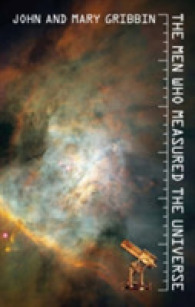Full Description
Fashion Industry and Tourism Strategy: Transforming Destinations and Shaping Experiences explores the growing intersection between fashion events and tourism, highlighting their socio-economic contributions to global destinations. Once limited to showcasing clothing, fashion events have evolved into a key driver of luxury tourism, influencing travel patterns, consumer behaviour, and destination branding. The increasing interest in luxury lifestyles, particularly in developing economies, has fuelled a surge in travellers to iconic fashion capitals such as Paris, Milan, and New York. While research has acknowledged the economic significance of fashion tourism, critical gaps remain in understanding its broader impact, including its role in cultural exchange, destination image-building, and sustainability.
In addition to economic considerations, this contributed work delves into the socio-environmental implications of fashion tourism, assessing its influence on heritage conservation, commercialisation, and sustainable development. The potential of fashion tourism to revitalise emerging destinations and serve as an off-season tourism strategy is explored, alongside concerns about overconsumption, resource exploitation, and social inequalities in the fast-fashion industry.
Through a multidisciplinary approach, encompassing organisational behaviour, finance, psychology, social development, and operations, Fashion Industry and Tourism Strategy: Transforming Destinations and Shaping Experiences fresh insights into an evolving tourism segment, making it a valuable resource for scholars, industry professionals, and policymakers.
Contents
Part 1. Fashion Tourism Research and Destination Image Building
Chapter 1. Impact of Fashion Tourism on Destinations: Uncovering Multi-disciplinary Aspects for Sustainable Development; Bapon Chandra Kuri, Ayan Banik, and Marco Valeri
Chapter 2. Paris Fashion Weeks through the Experience Economy Model: What Do Tourists Seek?; B Duan, J Dai, Y Zhang, and E Ma
Chapter 3. Fashion Weeks as an Effective Branding Tool for Tourist Destinations: The Case of Bulgarian Fashion; Mariya Stankova and Svetoslav Kaleychev
Chapter 4. Impact of Fashion Tourism Visual Communication on Iconic Destinations Consumers; Maria Nascimento Cunha and Oleksandr P. Krupskyi
Chapter 5. Tourism Branding of Croatia as a Fashion Tourism Destination Through the Affirmation of Traditional Motifs; Jasenka Kranjčević, Nora Mustać, and Sanda Čorak
Chapter 6. From Port to Porter: Antwerp's Fashion Sector as a Placemaking Factor, Mitigating Urban Crisis through Creativity and Persistence; Constantin Alexander
Chapter 7. Fashion Tourism as a Catalyst for Socio-Economic Change in Rajasthan; Manisha Paliwal, Komal Desai, Pooja Tanwar, and Omkar Bapat
Part 2. Virtual Fashion Experiences in Virtual Reality Fashion
Chapter 8. Fashion Tourism and Sustainable Development Goals: A Literature Review; Nitish Kumar Minz and Poonam Kumari
Chapter 9. Virtual Reality (VR) and the Role of Technology in Fashion Tourism; Jeetesh Kumar, Janitha Kularajasingam, and Marco Valeri
Chapter 10. In Search of Multisensorial Airport Experiences: The Case of Luxury Travel Shopping; Daouda Coulibaly and Camille Cherkaoui
Chapter 11. Fashion Shows in Cultural Venues and Sites and Tourism Destination Attractiveness: An Empirical Investigation; Anna Kyriakaki, Christina Stergiou, and Maria Salamoura
Chapter 12.Traditional Costume Experience is an Integration of Many Core and Peripheral Activities: Implications for the Experience Logistics; Bình Nghiêm-Phú
Chapter 13. Digital Fashion Tourism: Bridging the Gap Between Virtual Engagement and Physical Travel; Nishita Chatradhi
Chapter 14. Counterfeit Fashion Tourism, Analysis of Fashion Tourism Black Market and its Impact on Tourism in Marrakech; Mohamed Boukherouk








